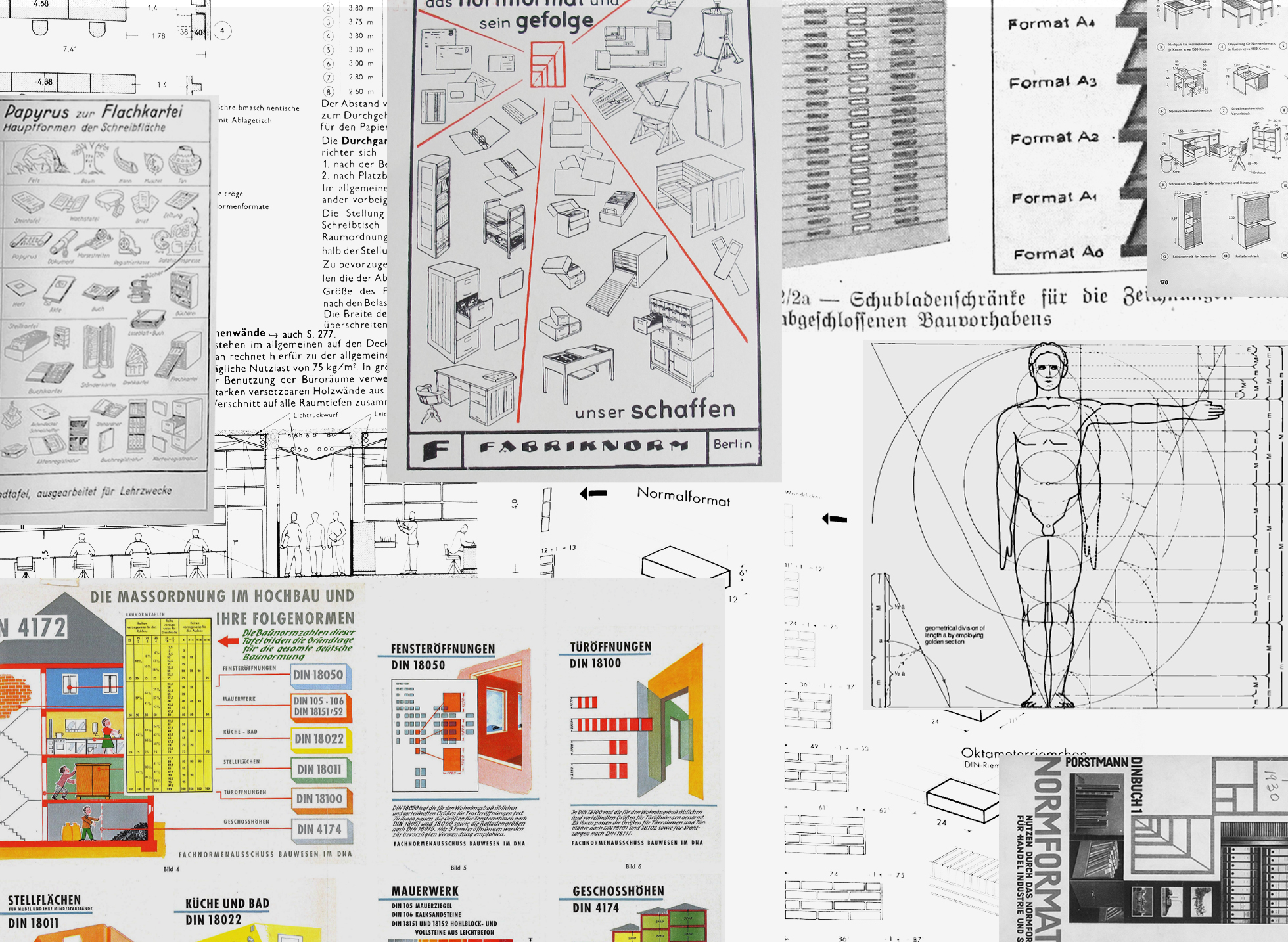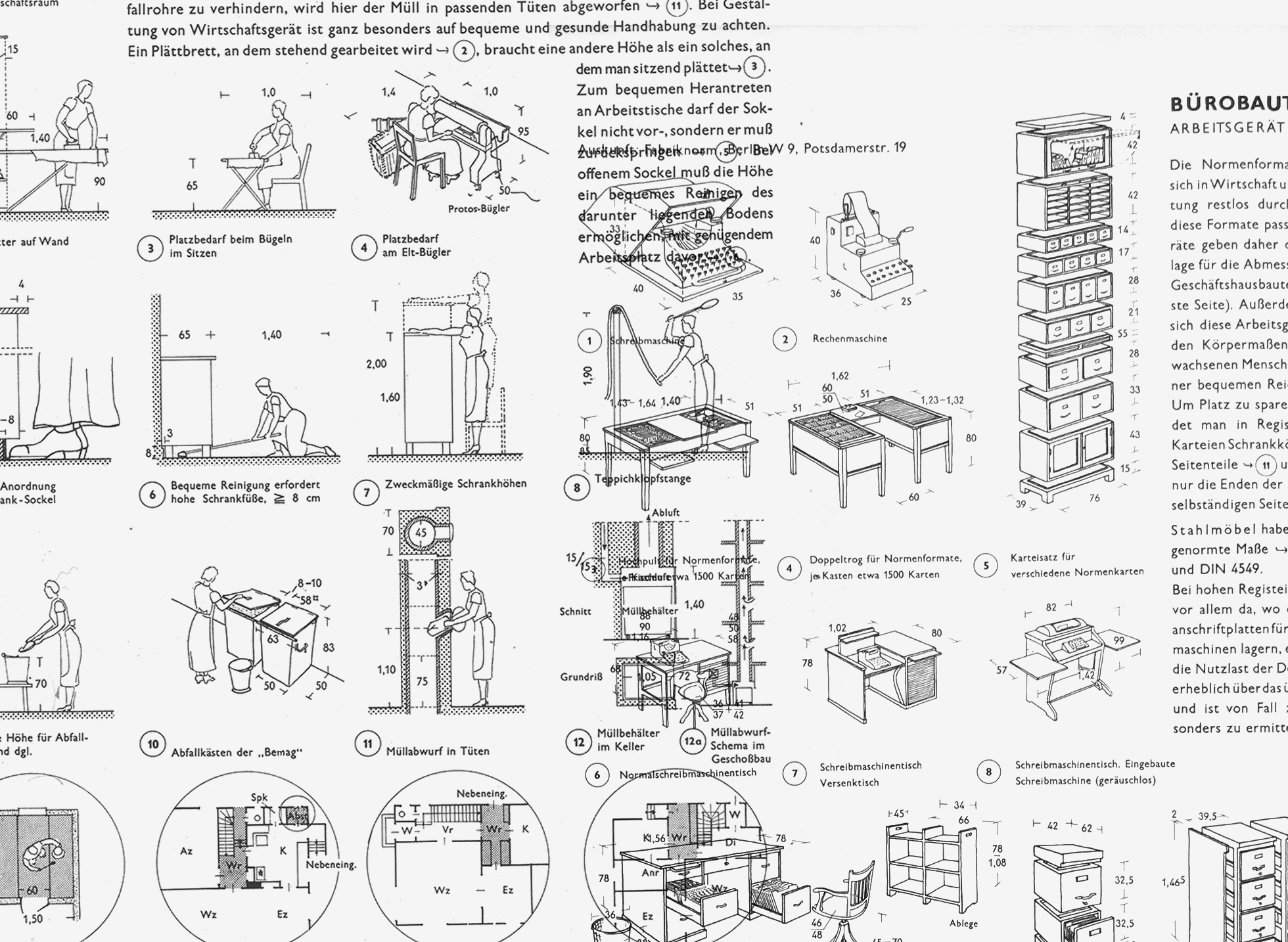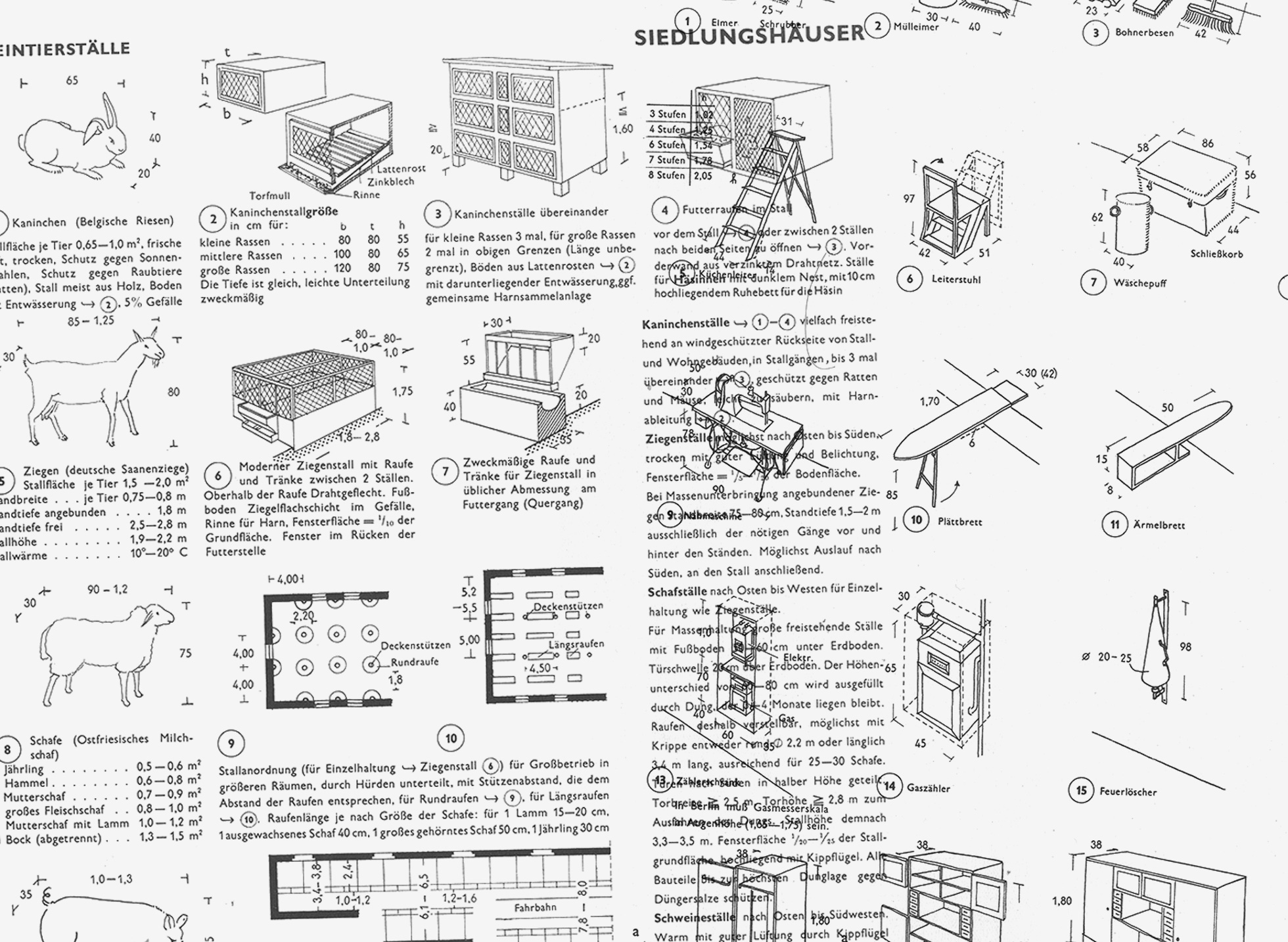1.
In 1912, the German chemist Wilhelm Ostwald asserted that in order to harmonize all knowledge and eliminate unnecessary expenditures of energy, the world’s information would have to be completely standardized. “The thoroughgoing organization of all human activity has already taken root in many other fields, such as technology and economics,” he observed in Der energetische Imperativ (1912). In previous decades, countries around the world had adopted time zones radiating from Greenwich, England, which allowed for the coordination of railways and refinement of shipping routes. They agreed to use the same units of weights and measures, from the meter and gram to the ohm and watt. Industrialists, politicians, and socialists had lobbied for society to be restructured around universal scientific principles, and for power to be granted to technical experts. But, Ostwald complained, in the realms of science and geistige Arbeit—which roughly translates as intellectual work—there had been “virtually no level of organization.”
While the popularization of the typewriter and Dewey decimal system in the late 1800s transformed the storage and retrieval of information, Ostwald believed that even more fundamental change was required in order to maximize efficiency. Ostwald, a prolific writer and renowned scholar, proposed something more like the division of physical labor into a series of motions, as advocated by Frederick Winslow Taylor in The Principles of Scientific Management (1911). He aimed to enable distant researchers to communicate with ease and office workers to process data without trouble. This enterprise might seem modest, but Ostwald believed that the result would be the seamless documentation and circulation of all knowledge—and, ultimately, the connection of all minds into a single “world brain.”
Ostwald’s credo—“Vergeude keine Energie, verwerte sie!” or “Don’t waste energy, make use of it!”—betrays an epochal fixation on efficiency. As Anson Rabinbach writes in The Human Motor (1990): “Behind the scientific and philosophical treatises on fatigue lurked the daydream of the late nineteenth-century middle classes—a body without fatigue.” With the increase in the number of workers who dealt primarily in knowledge and its material expressions, the techniques underlying mass production came to be applied to office work. This shift had a moral dimension, as standardization was associated with orderly and democratic societies, transparent and punctilious characters. Ostwald went so far as to suggest that Kant’s categorical imperative be replaced by the “energetic imperative.” He believed that all moral judgments were inextricably linked to the question of efficiency: Actions that minimize waste are good, those that unnecessarily cause waste are bad.
Ostwald and his cohort were galvanized by the development of the second law of thermodynamics, which states that entropy increases in any isolated system. The law gave credence to the notion that workplace efficiency represents a scientific and not just a moral or economic imperative. Ostwald was not unusual in his belief that the escalation of entropy threatened the very existence of life on earth. The question was how, exactly, to prevent this from happening.
To minimize waste, Ostwald advocated the use of universal auxiliary languages such as Ido, a simplified form of Esperanto (which was billed as “everybody’s second language”), and the invention of a global currency. But his focus shifted after the advertiser and bibliographer K.W. Bührer gave him a copy of Die Organisierung der geistigen Arbeit durch “Die Brücke” (The Organization of Intellectual Work through “The Bridge”) (1911), which Bührer wrote with the mathematician Adolf Saager and published in German and Esperanto. The book argues that the creation of universal systems for recording and circulating information hinges on the worldwide adoption of standards for the formatting of paper. By eliminating the need to consider paper sizes, fonts, layouts, margin sizes, and so on, standards would free postal workers, scholars, and bank clerks from the burdens of information management.
Ostwald was completely convinced by Bührer and Saager, and he agreed to fund their work for three years, using the money he had received from the 1909 Nobel Prize in chemistry. He became senior statesman and chief propagandist for Bührer and Saager’s organization, Die Brücke, established in 1911 in Munich. Through a newsletter, leaflets, a series of theoretical essays, and public exhibitions, Die Brücke lobbied for the imposition of uniformity on sheets of paper—which, in their various dimensions, cluttered desks, spilled from folders, and distorted image reproductions. “Paper and other bearers of signs and symbols form the technical foundation of all cultures, that is, of all intellectual capital [geistigen Kapitals],” Ostwald wrote in his 1927 autobiography. “If one wants to organize, one can only do so if one first intervenes in the unification and coordination of the most everyday, common, and thus also least reflective functional routines.” Following a proposal by the eighteenth-century German scientist Christoph Georg Lichtenberg, Ostwald proposed that all paper sizes share a common aspect ratio and that smaller sizes be derived from larger sizes by folding the latter in half.
2.
The paper sizes published by Ostwald and Die Brücke were called World Formats, because they were to be used everywhere and by everyone. “No world format can function without a world that accepts it,” Markus Krajewski writes in World Projects: Global Information Before World War I (2014). “Thus at the end of Ostwald’s script introducing the series of formats lie the unavoidable appeals to publishers and editors to use the eminently utilitarian world format for their own respective print products.” Ostwald managed, at least, to persuade the head of the Deutsches Institut für Normung (German Institute for Standardization), who suggested a partnership toward the end of World War I. “We are … astonished at how you, as an outsider, were able to figure out with such clarity the very thoughts that we have been trying to bring together,” he wrote in a letter to Ostwald’s former secretary, an engineer named Walter Porstmann.
Although the collaboration fizzled, Porstmann ended up going to work for the German Institute for Standardization. He modified Die Brücke’s proposal, which became the standard DIN 476, published in 1922. The paper formats are now in use by all countries except the United States and Canada. (The vast majority of printed matter appears on A4 sheets of paper, which measure 210 by 297 millimeters.) They are essential to the infrastructure of the Information Age and permeate the modern office, having shaped binders, filing cabinets, envelopes, scanners, printers, as well as programs like Adobe Acrobat and the documents they generate. While they may go unnoticed, and even fade into memory with the domination of the digital realm (which involves ever more complex and obscure forms of standardization), they express a familiar ideal: With the right technical adjustments and systems, society can not only be salvaged but liberated.
The German Institute for Standardization began plotting to reformat society in 1917, when engineers, industrialists, politicians, bureaucrats, and scholars were called on to determine how to increase productivity and decrease costs (especially in relation to the manufacture of arms). They first issued standards for pins, screws, screw threads, screw fittings, and technical drawings. The nonprofit company’s purview expanded during the 1920s, as did the influence of a new kind of worker: Verwaltungsingenieure, or administrative engineers. Each new standard not only prescribed the form of a particular object but contributed to a system that governed the relationship between objects—as well as the processes from which they emerged, and the laborers who executed them.
Following the implementation of DIN 476, which consists of multiple “series” and “classes” of paper sizes, the German Institute for Standardization developed specifications for bank statements, envelopes, address fields, postcards, train tickets, binders, newspapers, business letters, margins, subject headings, and mail-sorting machinery. The postal service and railway were early adopters and fervent evangelists. “The central office immediately dispatches a letter with information about paper standards to anyone who sends an unstandardized document,” a government representative informed Porstmann. “We are planning to circulate promotional literature [on paper formats] among users.” In 1924, the World Postal Congress adopted Germany’s paper formats, and Ostwald’s vision of knowledge overcoming the obstacles of national and cultural boundaries suddenly came to seem realistic.
The proliferation of standards in postwar Germany accelerated the pattern of rationalization described by Max Weber in Economy and Society (1922): the development of a rigid division of labor, clear chains of command, and routinized behavior. (“The more perfectly the bureaucracy is ‘dehumanized,’” Weber observed, “the more completely it succeeds in eliminating from official business love, hatred, and all purely personal, irrational, and emotional elements which escape calculation. This is the specific nature of bureaucracy and it is appraised as its special virtue.”) Training and monitoring employees got to be much easier; workers saved time by scanning and stacking envelopes without having to decipher handwriting and search for addresses. The German government rapidly implemented DIN 476 and related standards, promoted them in training manuals and newsletters, and sent state agencies “decrees with exact specifications about preferred usages,” Porstmann noted.
While citizens were not immediately enthralled by the prospect of their traditions (even those having to do with the sizing of documents) being supplanted by state edict, DIN 476 helped convince them that standardizing everyday materials and routines was not only feasible but beneficial. With the rise of Hitler, the mandate for orderliness and efficiency was intensified, and took on an overtly sinister aspect. Standardization was associated not only with discipline but with the enhancement of surveillance. The Nazis initially required party communications to conform to DIN 476, and ultimately outlawed the use anything but A4 paper in official correspondences. The state applied the standard to advertisements for tourism and books, calendars promoting performances, tickets for plays and trains, maps of countries and cities, and so on. School notebooks and other educational materials had to assume a single format, as did driver’s licenses. This attention to communication was matched in the construction industry, which the Nazis standardized and consolidated in order to quickly rearm and achieve economic independence, as well as to manage the mass of slave laborers who made this possible.
Porstmann predicted that “after paper formats, spatial formats will be standardized,” and advised that the principles of the former be devised in such a way as to easily usher the latter into existence. Indeed, by the 1950s the edicts of the German Institute for Standardization had permeated society: Paper formats supplied the basis for the standardization of bricks, buildings, and all the furniture and fixtures in buildings; prefabricated timber components and the dimensions of sidewalks and land lots; pallets, shipping containers, and the vehicles that convey them. The most important volume on construction standards, Bauentwurfslehre (Architects’ Data), by the architect Ernst Neufert, was published in 1936. The book, which quickly became essential to students and designers, established templates for cottages, chicken coops, bookshelves, row houses, living rooms, farms, banks, toilets, train stations, and so on, all of which conformed to the DIN standards of the time.1 West German cities soon came to reflect the fixation on harmonious forms and consistent ratios.
3.
In the last two decades, the personal computer and the Internet have often been credited with the birth of the information economy—which names the transformation of knowledge workers into proletarians, the conversion of thoughts and desires into marketable modules, and the conflation of life and labor. One of the most influential diagnoses of this phenomenon is the philosopher Maurizio Lazzarato’s essay “Immaterial Labor” (1996), which theorizes the shift from traditional industry to the production of “the informational and cultural content of the commodity.” (Lazzarato developed the concept of immaterial labor, which echoes Ostwald’s notion of geistige Arbeit, in conversation with fellow philosophers, most notably Michael Hardt and Antonio Negri.) The kind of employment—or, typically, self-employment—described by Lazzarato requires adeptness with “cybernetics and computer control” and ends up shaping “cultural and artistic standards, fashions, tastes, consumer norms, and, more strategically, public opinion.”
As Lazzarato and many others have noted, separating intellectual and manual work, both of which are subject to rationalization and automation, is not so simple. Yet we still often imagine—or are informed by news reports and breathless accounts of disruptions past and present—that the information economy vanquished whatever previously existed, at least in the United States and Europe, around 1980. The personal computer was born: Millions migrated from factory floors to cubicle farms, where labor as well as commodities were emptied of materiality. This story depicts the early computer as a neutral tool, or perhaps a vehicle for certain hippie-geek tenets that suffused Silicon Valley, and not a product of the bureaucracies (and corporations) that arose in Europe in the nineteenth century—and of the subsequent movement to standardize communication, which encompasses media as well as the workers who handle it.
The history of Ostwald and his cohort attests to the continuity between our current brand of capitalism and the standardization efforts (and underlying ideologies) of the early twentieth century, as well as the impossibility of liberating data from matter. The work that we now associate with twenty-first-century capitalism also belongs to Ford’s assembly line and Weimar’s paper pushers, and even catalyzed those approaches to the organization of labor and the management of information. (Without the ability to mine rare metals and transport them across the world, there would be no global communications infrastructure, and so there would be no digital economy.)
As Keller Easterling argues in Extrastatecraft (2014), standardization should be the crux of discussions about the ways in which work is performed and regulated, because it enables governance to be accomplished by other means. Easterling pays particular attention to the International Organization for Standardization (ISO), a private and putatively apolitical association that emerged from the campaigns of engineers and industrialists after World War II. The ISO, which is based in Switzerland, now issues protocols for GPS systems, shirt sizes, shipping containers, image compression techniques, and social responsibility; the protocols are voluntary and nonbinding, but the pressure to adopt them—and the costs of failing to do so—can be extraordinary. “Promises of a comprehensive, rationalizing, universalizing intelligence accompany the idea of global governance,” Easterling writes. “Such ideologies have been powerfully shaping the thickening bureaucracies that currently preside over global development.”
While we recognize how the assembly line molded contemporary factories and those who labor in them, we hardly understand how A4 paper molded contemporary buildings and those who construct them. This is because standardization helped transform professions like architecture into endeavors of calculation and computation, the mechanics of which are hidden to us. Handbooks like the Bauentwurfslehre guided the arrangement of interlocking components and managed information in order to minimize complexity and ambiguity. Today, architectural drawing is effected through a series of algorithmic protocols, the drafting table having been supplanted by a computer interface that plugs into a programmable black box.
The imposition of uniformity that was achieved before and after WWII by the German state and party organizations is now more likely to be undertaken by software companies, industrial consortiums, and groups such as the ISO and ASTM International. They claim only to ease the circulation of information and goods, but in fact they make highly political decisions about, for instance, the flow of data in packets through broadband cables. As Andrew Russell asserts in Open Standards and the Digital Age: History, Ideology, and Networks (2014), the rhetoric of openness that characterizes the Internet belies the role of sophisticated (and nearly invisible) forms of hierarchical control. Russell scrutinizes the “system builders” who create the infrastructure on which we rely, and who are “always engaged in ideological and discursive work, not merely technical work.”
Russell finds that new technologies do not necessarily drive social change; rather, they express and advance cultural and political values. The way that we labor—under the impression of autonomy but the conditions of the proletariat—is connected to the movement toward standardization led by engineers beginning in the late 1800s. The engineers formed associations that were devoted to the improvement of society through technology, cherished rationalism, entrusted authority to the private sector, and believed that discussions among professionals were “superior to adversarial conflicts in existing judicial and political institutions,” Russell writes. They invented what we now call “quality control” and the means of enforcement. Like Ostwald and his fellow World Brain enthusiasts, their utopian impulses ended up enabling states and corporations to control and extract value from workers, while extolling the morality of productivity, conformity, and efficiency.
Illustrations created from images taken from Ernst Neufert, Bauentwurfslehre (1936) and Bauordnungslehre (1943); K. W. Bührer and Adolf Saager, Die Organisierung der geistigen Arbeit durch “Die Brücke” (1911); Walter Porstmann, DIN Buch 1: Normformate* (1930); Werner Gräff, ed. Staatliche Bauhochschule Weimar (1929); and the work of students in Neufert’s Schnellentwerfen course.
1 Neufert went to work for Hitler’s chief architect, Albert Speer, in 1939; he later argued for the harmonization of all aspects of design, and theorized the role of the construction industry in “total war.”



